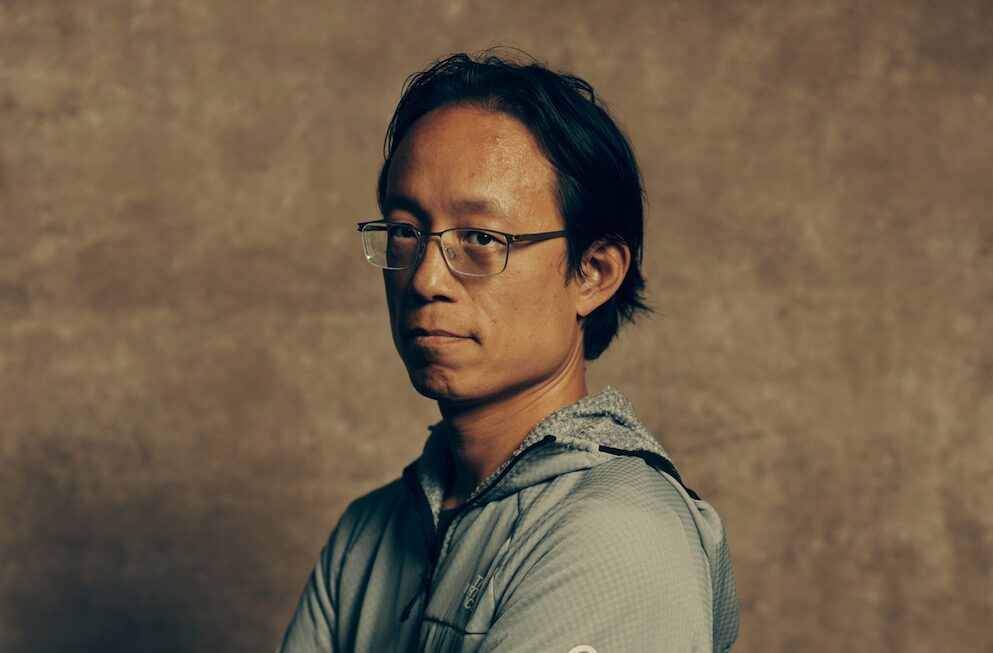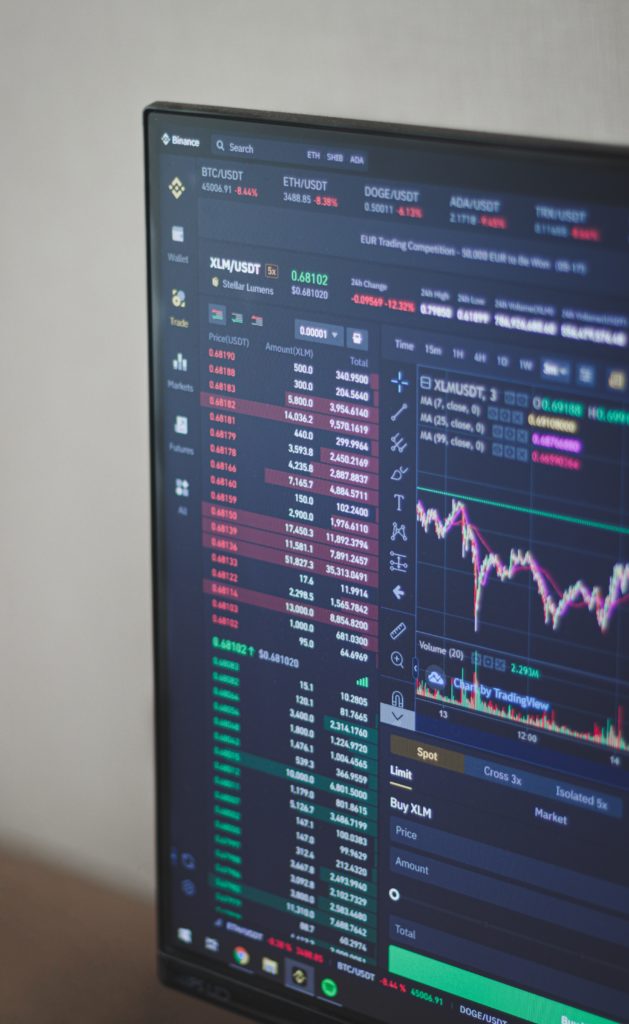‘I am Viennese’: Yat Siu plans IPO of up to $5 billion for Animoca Brands

He grew up in Vienna in the 1970s, moved to California at the age of 13, and eventually ended up in Hong Kong. The common thread for Austrian-born Yat Siu, who is now a big name in the crypto business, is technology, the internet and a lot of creativity. After selling his company Outblaze to IBM in 2009, the entrepreneur, who trained in classical music, moved from the enterprise segment to the consumer sector with Animoca Brands. At the time, it was not a crypto company, but was involved in gaming.
The success of CryptoKitties from portfolio company Dapper Labs finally gave Yat Siu a taste for crypto – and that ultimately became what Animoca Brands is today: a digital conglomerate for crypto investments that has been described as the ‘Berkshire Hathaway of Web3’ or the ‘Goldman Sachs of Web3’. Now, the serial entrepreneur is planning to take Animoca Brands public in 2026 – with a valuation of up to $5 billion.
In an exclusive interview with Trending Topics, Yat Siu talks not only about this IPO, but also about the potential of altcoins, the window of opportunity for crypto companies on the stock market, NFTs and the dangers of stablecoins.
Animoca Brands is planning to go public through a reverse merger. How did this come about and what are your goals?
Yat Siu: Animoca Brands is a digital conglomerate that primarily focuses on investments. We also offer consulting, market making, and treasury services. We’re probably the best altcoin index as a private company. Our thesis: Altcoins will collectively become larger than Bitcoin.
Bitcoin is like digital gold. Gold currently has a value of about 27 trillion dollars, while all publicly listed companies together are worth 128 trillion. With private companies, it’s over 200 trillion. Currently, altcoins make up about 30 percent of the crypto market – half as much as Bitcoin. But the development is similar to what happened with gold and stocks back then.
Innovation comes from altcoins, all new products emerge there. Nobody builds on Bitcoin. Bitcoin is a store of value and will probably always remain that way. But the actual application happens with altcoins.
We’re going public now following the motto “The early bird catches the worm.” Next year, at least a dozen companies from our portfolio will go public. If so many are going, we don’t want to be the last ones.
Timing is also important. By going public now, we can talk to institutional investors about the company, which wasn’t possible before. The large family offices or investment funds had no reason to talk to us. Now that we’re going public, we have many meetings.
We’re convinced that crypto is now in the institutional phase. Tokens with institutional support are more stable. Bitcoin may rise to $100,000 with volatility, but compared to pure retail tokens, that’s still harmless. Sometimes there are fluctuations of 50 to 80 percent with those, while Bitcoin and Ethereum remain more stable through institutional support.
We also have mature management, nine-figure revenues, and have been profitable for the last four years. We want to be the altcoin champion. When people think of Bitcoin, they think of Michael Saylor; with Ethereum, it’s now Tom Lee instead of Vitalik or Joe Lubin, because he can market it better.
The champions of various publicly listed companies represent different ecosystems. We want to be that for altcoins. That’s where all the growth is, but it’s very difficult for investors to understand which altcoins they should buy. Ethereum, Solana, Bitcoin – people understand those. But Bitcoin multiplying tenfold in the next two years is relatively unlikely. With altcoins, it’s possible.
Those who want to be invested in crypto probably allocate like this: 50 percent Bitcoin, 30 percent Ethereum, 10 percent Solana – and then you need 10 percent with real growth potential. Those are altcoins. But how do you invest in them?
We’re not a fund, but can participate in investments long-term. At the same time, we can earn revenue through fees, returns, and options. Imagine if we had invested in Google, Amazon, or eBay in the late nineties. As a fund, we would have had to sell after seven or ten years. Had we kept the shares, these companies would have become much larger.
We think generationally, especially because of AI. This isn’t something that will play out in two, three, or five years.
This year, several crypto companies like Gemini and Circle have gone public. The fourth quarter of 2025 was mixed. When is the right time?
Yat Siu: It depends on whether the company generates revenue and profit. Our EBITDA is quite large. We expect nine-figure revenues and higher profits than last year. Because we’re not an exchange, we don’t have custody risk. We’re not as dependent on exchange customers.
Of course, we can’t launch tokens in bad market conditions. The first quarter, for example, was pretty bad. But the fourth quarter isn’t actually that bad, although October was difficult. Trading is still happening, and we earn from volatility. Whether the token rises or falls – we earn on both sides through our services.
We also have many successful tokens in our portfolio. Humanity Protocol, for example, has risen strongly in the last two weeks. We’re the largest investor and also did the token launch. So we’re well hedged.
Our entry price for investments is probably one of the most favorable because we don’t just invest in funding rounds, but also offer consulting and services. That means we also earn tokens. We don’t buy tokens on the market, but are involved from day one. Our valuations are often at 10 to 20 million at entry. If the market value then reaches only 50 or 100 million, that’s already very successful. It depends on the entry point. That’s our special strength.
Animoca Brands is primarily known for The Sandbox. You said you’re a crypto conglomerate. Is there a good comparison?
Others have compared us to Berkshire Hathaway or Goldman Sachs. Goldman Sachs does consulting and IPOs, we launch tokens. It’s a mix of both. Berkshire Hathaway is a holding company with many operating companies. We are an operating company that also invests a lot – more like Berkshire Hathaway in that direction.

You have many tokens in your portfolio, your own and others. What does the mix look like?
Yat Siu: We don’t work exclusively. Moca, for example, is very active in the digital identity space, but we also invest in other identity chains. In our opinion, everything must mix. Maybe one does identity better for consumers, another better for people in Africa. Then we can bring the data together, and with tokens, data exchange is relatively simple.
We’re invested in over 20 Layer-1 blockchains. There will be many ecosystems in crypto. This doesn’t have the same impact as in Web2. In Web2, you build exclusive network effects, everything is connected via APIs. In crypto, everything is permissionless. I can use my value, my tokens anywhere. Bridges are now much easier. You’re never exclusively tied to one blockchain.
It’s like open migration – I can simply go where it works best. This is better for competition because you have to deliver more to keep customers. You can’t just invest in one or two companies, but must invest in at least a dozen going in a similar direction.
The difference in the crypto space is: The users are all on-chain. You can approach all of them and say: “I’ll give you tokens if you use my product.” That’s why we built a reputation system with Moca ID. Every company can say: “I want users who show a certain kind of behavior” – who don’t sell tokens on the first day, for example. Then you can offer them more – a kind of reputation score like a credit score, but for airdrops.
We like to invest in innovative companies. But if something doesn’t exist where we see great potential, we do an incubation. We started early with Open Campus in the education sector. Now we’re doing a lot with student loans. Nobody is doing that, even though it’s a very large market – about three trillion dollars. It’s probably one of the best onboarding mechanisms for crypto. Students need money, and there’s also government backing.
What are the largest positions in the portfolio?
Yat Siu: The top 5 are quite distributed. We don’t have any token with 70 or 50 percent. Of course, SAND, EDU, and MOCA are very large because we founded them. Then TON – we have a large position in TON. Humanity Protocol, PENGU, Apecoin – those are the larger ones. The positions are usually between 10 and 30 million, and the portfolio is worth 1.4 billion dollars in total.
What market valuation do you expect?
Yat Siu: You can calculate that because the ratio in the reverse merger is fixed – 95 to 5. You can take the market value of the company Currency and multiply by 20. At the moment, it’s about four and a half to five billion dollars, not far from our last funding round. That’s an indicative price. When we go public, expected in the second quarter, we’ll know the actual market value.
Are these primarily institutional investors who would actually invest in the tokens but can’t?
Yat Siu: We imagine that these will mainly be institutional investors. Private investors would rather buy the token directly. What we’ve discovered with DAOs and family offices: They don’t just want to invest in tokens, but in companies that are responsible for them.
For a family office or an institutional investor, it’s difficult to say: “I’ll just buy Ethereum or Bitcoin.” If there are problems, they would be responsible. Satoshi isn’t reachable, Vitalik leads a foundation. But if I buy a listed company like Bitwise and there’s a problem, Tom Lee is responsible and has to take care of it. That’s a typical scenario with institutional investors.
Especially with altcoins: Investors are very interested but don’t understand them. There’s no publicly listed company that really talks about altcoins. Ethereum and Solana are altcoins, but not really what we’re talking about – we mean consumer products. Investors understand that there’s potential, but wouldn’t directly invest in 20 to 30 different tokens.
We’re basically the altcoin index that also makes profit. With the profit, we can reinvest. We’re not an ETF – that’s our real leverage. Imagine if we had been listed in 2016 or 2017 and had bought and held Ethereum long-term. As a fund, you would have to sell after seven or ten years. Had you kept it, these companies would have become much larger.
In our view, there are many tokens with 50x or 100x potential, more in the altcoin space than with the large caps.
How do you evaluate tokens? Security versus utility?
Yat Siu: We prefer utility tokens. Security tokens – for example with our art platform Mootiva – there might be some, but they’re not in the portfolio. Generally all utility tokens. Security tokens like with Mootiva or Galaxy Digital are projects where we earn, but aren’t involved. They’re not on the balance sheet.
What is Animoca Brands’ business model? Where does the profit come from?
Yat Siu: The profit comes from two directions. First, we earn tokens through our consulting work. Second, treasury management and treasury services for the portfolio.
Here’s how it works: Let’s say you have a million tokens. 70 to 80 percent are locked as security, and 20 to 30 percent are hedged. Then you can build a floor, sometimes up to 40 percent – that’s the downside protection. If the token suddenly rises 100-fold, we lose the hedge, but earn much more on the other side. That’s how a hedge fund operates.
Because we have over a billion dollars of these tokens, we can hedge our assets with a smaller percentage. Additionally, we have returns, asset treasury services, OTC trading. The projects we launch then also have customers who buy from us – with launchpads and so on. But 60 percent of our revenue comes from treasury management, hedging, and consulting.
What do you say to Bitcoin maximalists who describe altcoins as worthless?
Yat Siu: Nonsense! That’s like saying: “We need to go back to the gold standard.” I have two main problems with that.
First: If everyone only uses Bitcoin, that’s very good for people who have Bitcoin. But for everyone else, you only benefit those who have Bitcoin. That goes exactly against what the original Bitcoin supporters were against: centralization of power.
Second: For any progress, you need inflation. We don’t live in a time of real scarcity – otherwise there would be constant war. We live in an era of abundance because we can have inflation. Not just with money, but it’s easier to produce materials, energy – that’s all inflation.
Take intellectual property – that’s a value system from our ideas and creativity. That’s not tied to gold or physical resources. Those are innovations we’ve made, and they’re now worth over 80 trillion. The largest companies in the world – Nvidia, Google, Microsoft – that’s all intellectual property.
The problem with Bitcoin maximalists is: They believe only this one currency should be used – that doesn’t work. It’s also not inclusive.
New ideas and products with new tokens – if you make profit on a memecoin or utility token, part of it often flows back into Bitcoin. So it helps Bitcoin. You bring more people into the system. If Bitcoin costs a million dollars, fewer new people will come in.
Philosophically speaking: The universe is not fixed, but expanding. It grows, there are more people, new creativity and ideas. Progress is inflation-based. Bitcoin as a store of value with fixed supply is a very good inflation hedge. But for growth and scalability, it’s not practical.
How do you see the dependence of the altcoin market on Bitcoin?
Yat Siu: That has to do with leverage. People who have Bitcoin and use leverage invest in other things with it. That’s no different than any other economic system. On the stock market, most founders don’t sell their shares, but use them as collateral for loans. It’s connected, but has to do with the fact that Bitcoin currently makes up over 50 percent of the crypto market.
That will change. When billions of people have crypto, the market is larger, the altcoin market is larger, and the impact is no longer the same. Like 150 years ago with gold and stock companies. Now, when gold rises, it has an impact, but not as big as 100 years ago.
Another point: When Bitcoin rises, there’s an impact on altcoins, but not as strong as when Ethereum rises. People who use Ethereum spend it more because it’s an inflation-based token. Bitcoin is deflationary – you use leverage, but never want to sell it. Bitcoin could double, but that wouldn’t double the altcoin ecosystem. But if Ethereum doubles, the altcoin market will more than double, maybe triple.
Which markets are most important for you?
Yat Siu: Asia is always important – the largest market by users, and we’re based in Hong Kong. The Middle East is also important – not just Turkey, but also Saudi Arabia, generally the Middle East and Africa.
America will be the crypto capital of the world. A lot going on, not just with regulation, but generally with interest. In recent years, crypto was almost not allowed there. Now there’s pent-up demand. That’s why it’s important that we’re on NASDAQ.
Europe is not our biggest focus at the moment. Not because we don’t want to be there, but compared to other markets, it’s smaller. That has to do with the understanding of crypto and also with the attitude toward capitalism compared to Asia or America. Crypto and capitalism are strongly connected. If you’re pro-capitalist, crypto is a good topic. Europe is more reserved.
For us, there’s also: Where is the fastest and largest AI development? We believe that tokenization and crypto is the first-class system for AI agents. Blockchain technology is the regulation for AI. AI can make mistakes or do bad things. You need a system you can trust – and that’s blockchain, because you can’t change it.
I see it like humans, government, and the rule of law. Humans sometimes have bad or good ideas, but you have laws and government. Blockchain is similar here – so you have a functioning system. Cross-chain and permissionless – it’s real digital property rights, not just for humans, but AI agents can also trade with it.
The problem with Web2 companies: Everything is integrated through APIs. If OpenAI says “I don’t like you,” they can simply shut it down. That also happened with Facebook and X. It’s very difficult to build a large value system if it could disappear at any time.
If, for example, you have a billion dollars that depends on OpenAI – then OpenAI isn’t dependent on the company, but vice versa. It’s important that the data and material are really owned by the AI service or agent through tokenization. The strongest AI development is in Asia and America.
What about the Chinese market?
Yat Siu: Crypto is not banned in Hong Kong. Hong Kong is part of China, but has always been the financial center for import and export. In Hong Kong, there is stablecoin regulation. That doesn’t apply to China, but to Hong Kong. Generally, you’re allowed to own crypto in China, but not trade it.
We have a joint venture with Standard Chartered for stablecoins and banking licenses. Hong Kong is there for these crypto activities – buying Bitcoin, trading, and so on. We have 13 licensed exchanges in Hong Kong. That’s important for Hong Kong as a financial center and as a gateway to China.
Many people from China do their crypto activities in Hong Kong or Singapore. Bitcoin mining is banned in China, but not because of Bitcoin, but because of energy. For China, it’s more important that energy is used in factories that employ tens of thousands, rather than in thousands of GPUs.
How did you come to Animoca Brands?
Yat Siu: I am Viennese! I grew up in Vienna in the seventies. My parents are musicians – that was the reason, not my choice. I studied music and developed software during that time – MIDI software for music and technology on Atari in the eighties.
Atari hired me without knowing how old I was – I had communicated with them via CompuServe. I went to California, at about 13 years old. I still got a job because it was only about whether I could do it.
Then I went to Asia, to Hong Kong, where I founded one of the first Internet Service Providers in the early nineties – Hong Kong Online. I’ve always been in technology and internet. In 2009, I sold a company called Outblaze to IBM – that was a messaging service that became part of Lotus Notes.
I wasn’t allowed to work in the enterprise sector for three years after that, only consumer. But I also had a gaming company, and when the App Store emerged and Angry Birds came out, everyone was making mobile games. That became quite big. In 2011, Animoca Brands was born from that – not as a crypto company, but as a video game company.
In 2017, we owned a company in Vancouver – Dapper Labs, formerly Axiom Zen. They developed the gamification for CryptoKitties. That was our beginning with NFTs. That’s why we invested in The Sandbox, OpenSea, and others – 2018, 2019.
For us, it was about digital property rights in video games. That then expanded greatly when we understood that it’s about much more than video games – about the entire financial system. The thesis: Digital property rights spread not only capitalism, but also financial education.
We discovered that in the Philippines and Indonesia with Axie Infinity. We thought: “This is much bigger than video games.” And developed the company accordingly.

Are there plans for an office in Vienna?
Yat Siu: Possible. We don’t need an exchange license because we don’t custody assets. We’re definitely exploring that. Vienna is interesting because the tax office behaves well. The only problem is, there’s no direct flight from Hong Kong.
Berlin was once interesting because of Ethereum, but decentralized in terms of culture. The government didn’t promote it. Switzerland is too traditional in the crypto space. Our largest European office is in London. What’s happening in Paris because of game development is also no longer so pro-crypto because of the new government.
Vienna has the greater potential. But currently, America is the priority. It would be great if we could build something in Vienna.
NFTs had a huge hype. Are they dead, or will they come back?
Yat Siu: It depends on what you describe as “dead.” Currently, monthly NFT trading is at 300 to 400 million dollars. At the end of 2021, beginning of 2022, it was over one and a half billion per month – so much larger, but only for three months. A few months ago, it was 600 to 700 million per month. So it is a market.
The difference: It’s not as hyped anymore, and only people in the crypto space know about it. I see it more as digital skins or objects, where in the future people won’t say “That’s an NFT” anymore – just like people don’t say “MP3” anymore, but simply “music.” Good technology disappears into the background.
The important thing: When you have real property rights to skins or assets, it allows other companies to build products on them. For example, you can’t build a company that works with Fortnite skins because you never own them. But with NFTs, that’s possible.
You can already see this with lending – you can borrow up to 70 percent against top NFTs. You couldn’t do that before. With Steam and CS
six billion dollars collapsed because Valve changed the rules. That couldn’t happen like that on the blockchain. Objects have value in video games – people just don’t understand yet that you could build that on blockchain.
Stablecoins – isn’t that too much control by one company? Circle, for example, wants to control whether you can buy weapons with USDC or not. If you think that through…
Yat Siu: The difference is: In crypto, you have the choice of which stablecoin you want to use. If one stablecoin says “I don’t allow that,” there’s another one that says “I’m okay with it.” That will be the difference.
We think of stablecoins as an onboarding mechanism. If people understand that, they wouldn’t have everything in stablecoins, but in other assets like Bitcoin, Ethereum, or tokenized assets.
For example, we announced with Republic and Solana that they want to tokenize our shares and sell them to their users. Anyone with Solana can then buy Animoca shares in tokenized form that they really own.
The point for stablecoins is onboarding. Politically speaking, it’s dollarization. There are over 150 million people worldwide who now have dollars, who normally couldn’t even have a bank account. They’re growing up in the dollar economy.
If the country becomes inflationary, they will all use dollars – heading toward Argentina. That’s the risk for Europe. Asia, for example China through Hong Kong, has understood that. Korea is thinking hard about it. MICA has a stablecoin regulatory framework, but there’s no Tether equivalent for the Euro.
You have to understand that it’s about politics and sovereignty. Europe was colonized by American tech companies – Facebook, Google, Apple, Microsoft. If they want something that goes against European interests, you can’t do anything.
Compared to Korea or China, they have their own companies. They’re locally integrated and act in local interest. It will be the same with stablecoins. If Europe doesn’t strongly build an EU stablecoin now as a response to the USA – then a US dollar stablecoin will spread everywhere in Europe. That’s the risk.































